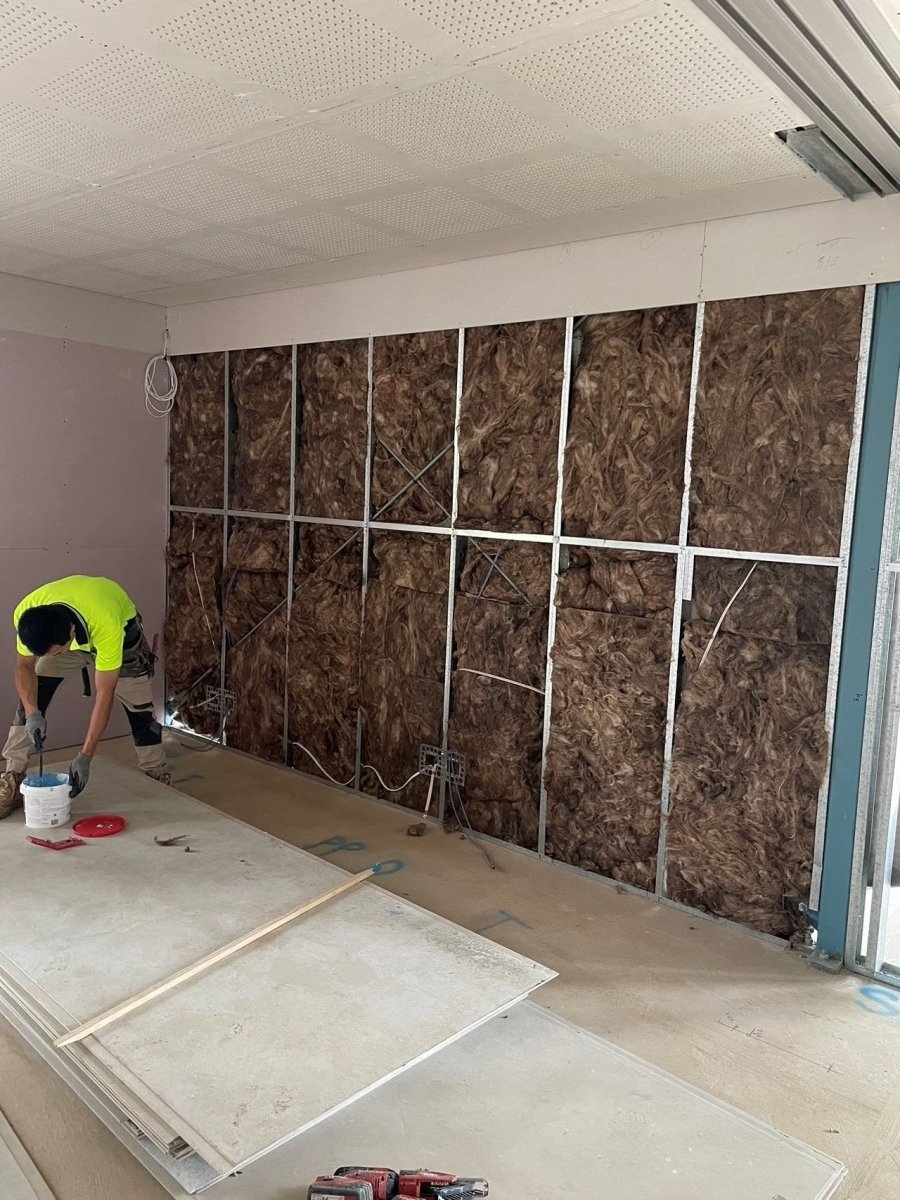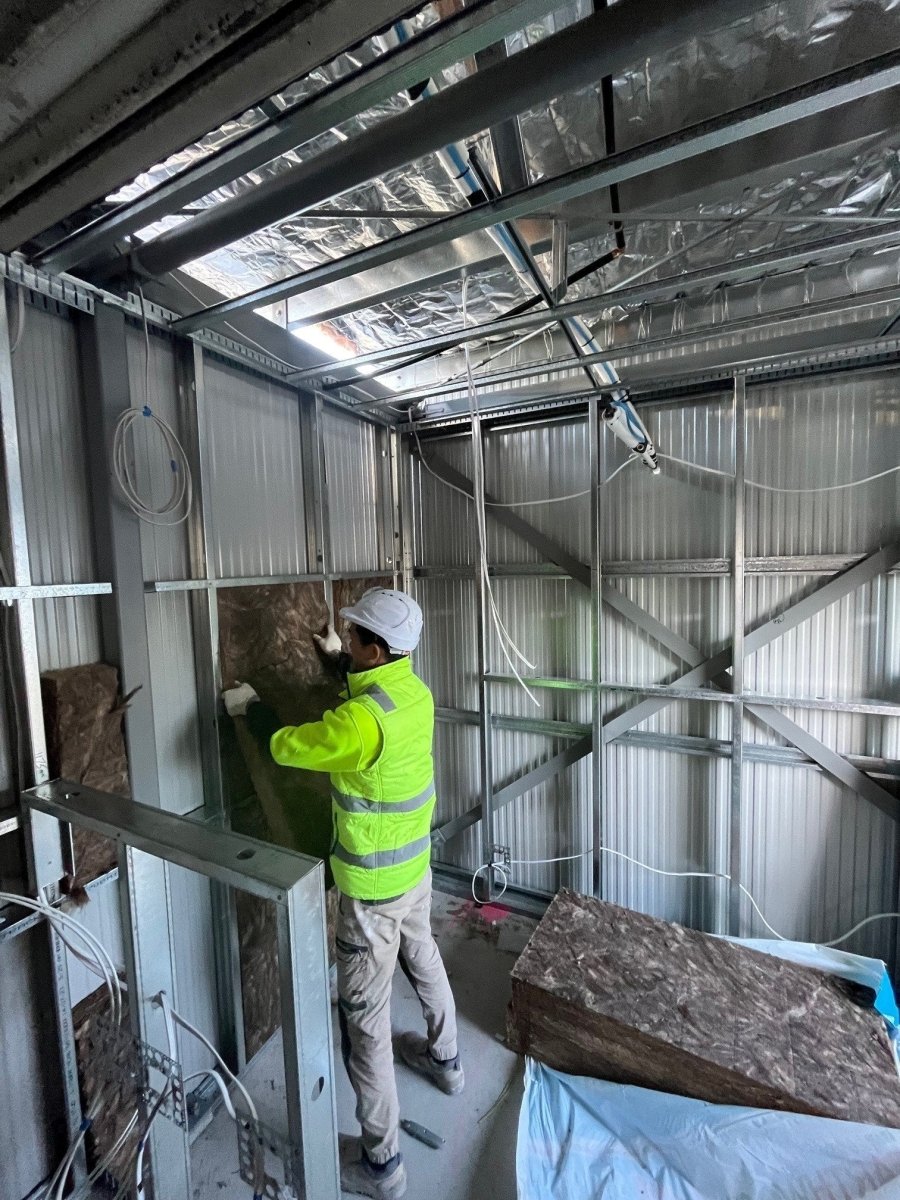- Sku: KIR3558
Knauf Earthwool R3.5 Ceiling Batts 175mm x 580mm x 1160mm 11.4m2 (731838)
Product Description
- Thermal performance - keeps a building cool in summer and warm in winter
- Acoustic performance - reduced the transmission of noise
- No added formaldehyde
- Non-combustible - AS 1530.1
- 50 year warranty
Earthwool® Ceiling insulation batt offers superior performance, with the ultimate in energy saving properties, enabling you to keep your home cool in summer and warm in winter. It’s super-soft to handle and install. As well as providing a superior result, this product is extremely durable and comes with a 50-year warranty, so will stand the test of time.
Earthwool® insulation is made using up to 80% recycled glass and with ECOSE® Technology, a sustainable, bio-based binder that contains no added formaldehyde.
Specifications
| R-Value | Width (mm) |
Thickness (mm) |
Coverage (m²) |
| 3.0 | 430 | 145 | 11.5 |
| 3.0 | 580 | 145 | 15.5 |
| 3.5 | 430 | 175 | 8.5 |
| 3.5 | 580 | 175 | 11.4 |
| 4.0 | 430 | 195 | 7.5 |
| 4.0 | 580 | 195 | 10.1 |
| 5.0 | 430 | 210 | 5.5 |
| 5.0 | 580 | 210 | 7.4 |
| 6.0 | 430 | 275 | 5.5 |
| 6.0 | 580 | 275 | 7.4 |
Where does Wall Ceiling deliver to?
Wall Ceiling is delighted to offer plasterboard delivery to metro Sydney.
For REGIONAL AREA, please email us at info@wallceiling.com.au with the items and quantities you need from our website, and we will promptly provide a manual quote.
How much do you charge for delivery?
Customer will receive an accurate delivery charge during checkout.
How long does it take to deliver the order and how much it will cost?
Delivery time frame varies by location:
| Location | Delivery Time Frame | Delivery Cost |
| Sydney | 1 - 3 business days | Starts from $45 |
| Central Coast | 3 - 5 business days | Flat delivery $195 |
| Wollongong | 3 - 5 business days | Flat delivery $195 |
| Bowral - Mittagong | 3 - 5 business days | Flat delivery $195 |
Some products may have a longer lead time which we will inform you as early as possible.
Who is responsible for unloading the materials off the truck?
Our delivery driver will assist you to unloading the materials next to the truck. However, it is the customer's responsibility to move the materials beyond that point.
Do you offer crane truck delivery?
No, we found hand unload or forklift on site is the most effectively way to unload plasterboard products.
What time will truck arrive during the delivery day?
It's difficult to predict precise delivery time due to factors such as traffic and weather conditions.
To facilitate a smooth delivery process:
- Our office will schedule and confirm delivery date with you after receiving your order.
- On the day of delivery, our driver will contact you before dispatching from warehouse to ensure you are prepared.
Do I need to be on-site to receive my delivery?
Yes, if you are not available, please kindly arrange another person to accept and help with unloading on your behalf.
Have a question?



How Insulation Works
When it comes to maintaining a comfortable living environment, insulation plays a pivotal role. But what exactly is insulation, and how does it function to regulate temperature in our homes and buildings? This comprehensive guide will delve into the science behind insulation, explaining its importance and how it effectively reduces energy costs and enhances living comfort.
The Basics of Insulation
At its core, insulation is a material designed to prevent the transfer of heat. Heat can move in three ways - conduction, convection, and radiation. Insulation materials are crafted to minimize all three forms of heat transfer, thus maintaining a consistent internal temperature regardless of external conditions.

Conduction and Insulation
Conduction is the process by which heat moves through materials. Think of touching a hot metal object; the heat is conducted from the object to your hand. Insulation materials, such as fiberglass, foam, or cellulose, are structured to be poor conductors of heat. They contain tiny air pockets which drastically slow down the transfer of heat through conduction.
Convection in Insulation
Convection refers to heat transfer through fluids (liquids and gases). In buildings, this usually occurs when warm air rises and cool air falls, creating a circulating pattern. Insulation disrupts this air movement. Materials like wool or foam with a lot of air pockets limit the movement of air within them, thereby reducing the loss or gain of heat via convection.
Radiation and Reflective Insulation
Radiation is heat transfer in the form of electromagnetic waves. Radiant barriers, often made from reflective materials like aluminum foil, are used in insulation to reflect radiant heat away, rather than absorbing it. This is especially effective against heat from the sun. Foilboard is one of popular rigid insulate panel product which is manufacture and sell in Australia.
The Role of R-Value in Insulation
The effectiveness of insulation is often measured in R-values. The R-value indicates a material's resistance to heat flow. The higher the R-value, the better the material insulates. When choosing insulation, it's crucial to consider the recommended R-values for your area and the specific part of the building you're insulating.

Types of Insulation Materials
There are various insulation materials available, each with unique properties and applications:
- Fiberglass Insulation: Made from fine glass fibers, it's commonly used in both residential and commercial buildings. Earthwool insulation is a type of fibreglass/glasswool insulation, however it is manufactured with a revolutionary ECOSE binder. This sets Earthwool insulation apart from their other competitors as it uses no formaldehyde which means its super soft, low itch and easy to handle.
- Cellulose Insulation: Consisting of recycled paper products, cellulose is an eco-friendly option.
- Foam Insulation: This includes materials like spray foam which expands to fill gaps, providing an airtight seal.
Insulation's Impact on Energy Efficiency and Comfort
By reducing the unwanted flow of heat, insulation plays a crucial role in energy efficiency. Well-insulated homes require less energy for heating and cooling, leading to lower utility bills and a reduced carbon footprint. Additionally, insulation contributes to a more comfortable living environment by maintaining a consistent internal temperature.
Get in touch
Insulation is an essential component in the construction and maintenance of buildings. Understanding how it works helps homeowners and builders make informed decisions, leading to more energy-efficient and comfortable living spaces. With various materials and technologies available, there's an insulation solution for almost every need and climate. Please contact Wall Ceiling for more information about Insulation products.




